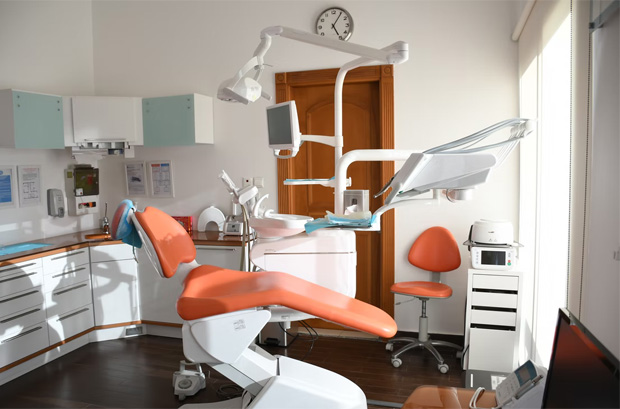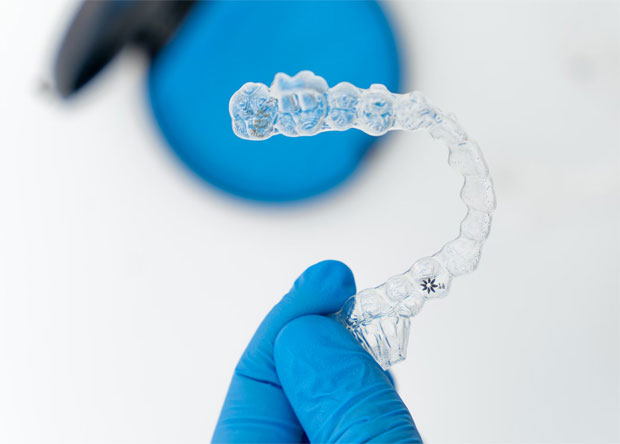Your Path To A Perfect Smile Starts With Orthodontics

Your Path To A Perfect Smile Starts With Orthodontics
Orthodontic treatment can provide a perfect and healthy smile. It can restore the aesthetic and functionality of teeth by resolving teeth crowding, spacing between teeth, overbite underbite, and overjet. It also comforts the TMJ pain due to more forward lower jaw growth as compared to the upper jaw.
Expert orthodontic treatment after a detailed assessment includes making individually customised plans to align the teeth according to the patient’s age, their teeth malalignment and bite issues. An experienced orthodontist uses advanced and discreet orthodontic treatments such as Invisalign, ceramic braces, and lingual braces that can help in achieving a perfect smile without compromising aesthetics during treatment. Orthodontic treatments do not affect daily activity, but can include temporary mild pain, speech, and eating problems that resolve with time. Oral hygiene maintenance is extra important to maintain during an orthodontic treatment.

How do I know if I need orthodontic treatment to improve my smile?
Orthodontics is the treatment that corrects the teeth alignment to make them aesthetically and functionally better. If the teeth are not aligned properly and it raises multiple issues, then you should contact your dentist to avoid complications.
- Aesthetic Issue: A visible gap between the front teeth (diastema), teeth crowding and overlap to each other that cause food accumulation between teeth and difficulty in teeth cleaning, gummy smile in which the size of teeth is too short, due to which gum is more visible during a smile.
- Functional Issue: Malaligned teeth can affect daily activity such as speaking problems, and difficulty biting and chewing. In normally aligned teeth, upper jaw teeth ideally sit in lower jaw teeth, in malaligned, teeth coincide improperly such as overbite, underbite, crossbite, and overjet. All these abnormal sets of upper and lower teeth can cause biting and chewing problems, discomfort in teeth, chewing muscles, and jaw while eating.
- Discomfort in Breathing and Sleep Apnea: Sleep apnea is a condition in which a pause or shallow breath can cause difficulty breathing while you sleep. The cause behind this is the aligning of teeth abnormally that blocks the airway. This condition requires immediate assistance.
- TMJ Joint Problem: The jaw joint is affected by abnormal tooth alignment, which causes abnormal jaw movement during daily activity speaking, and chewing. It causes a clicking sound during the opening and closing jaw. Severe pain and discomfort are felt in the head, face around the ear, and jaw while eating and chewing food. If you have these problems, you should seek help from your orthodontist.

What age is suitable for starting orthodontic treatment and how long it will take to achieve the result?
Orthodontic treatment can align teeth of all ages. Expert orthodontics diagnose the case in detail with the help of an intraoral scanner and take multiple radiographs. After a complete assessment, they make a customised treatment plan according to your age and teeth condition.
In children, 6 to 14 years, professional orthodontics use a preventive approach to align the teeth because at this age temporary teeth are replaced with permanent teeth and jaw growth is in process. An expert orthodontist utilises the jaw growth space to align crowded teeth and with functional appliances guide the jaw growth. Orthodontic treatment at an early age has the benefit of easily aligning teeth and getting a perfect smile in a short duration of time.
In teenagers or adults, orthodontic treatment takes a long time to align teeth because the jaw is fully developed so it takes more time to reverse back to the normal correct position. Generally, it will take around 6 months to 2 years to resolve the aesthetic and functional issue by orthodontic treatment but it can vary depending upon the individual case complexity. Orthodontics usually recommends light, continuous force on the wire during orthodontic treatment to align the teeth, as it prevents excessive surrounding bone resorption and reduces the chances of relapse of teeth after treatment completion.

Alternatives to traditional braces for straightening teeth
In orthodontics, different types of treatment are used to align the teeth according to case complexity, age, and patient aesthetic demand. Most of the patients have aesthetic concerns due to metallic wire exposure, expert orthodontics uses more discreet and advanced orthodontic treatments to achieve a perfect smile. These options include:
- Invisalign: Clear aligner is an advanced orthodontic treatment that is used to correct crowding and spacing between teeth. Invisalign treatment is the most popular option among both teenagers and adults.
- Ceramic Braces: It is the same as traditional metallic bracers but in this treatment tooth colour brackets and wire are used to align teeth, this treatment discretely resolves teeth overlapping and biting problems.
- Lingual Braces: In this orthodontic treatment the orthodontic wire is placed on the back side of the teeth to align the teeth and remove spaces between teeth.

Will orthodontic treatment impact my daily activities, such as eating and speaking?
Orthodontic treatments do not affect daily activity. However, initially or during treatment, wire adjustment can produce temporary pain, discomfort during speech and eating, and difficulty maintaining oral hygiene. Expert orthodontics properly guide the patient to resolve any issues. Mild to moderate pain is common due to applying force by wire on the teeth but it subsites with time as the teeth adapt according to the force.
Discomfort while eating during initial treatment, can be restored by taking a soft diet and avoiding sticky, hard food. Speaking problems can be a concern, but with time and practice the speaking muscles adapt accordingly. Oral hygiene can be maintained with soft gentle brushing around the brackets, and by using a mouthwash rinse every day, as well as with regular professional teeth cleaning during treatment.
Conclusion
Orthodontic treatment is a way to get a resilient, brighter and healthier smile. Orthodontic specialists with advanced technology, successfully deliver thousands of perfect smiles for all ages of patients.
Guest Article.





